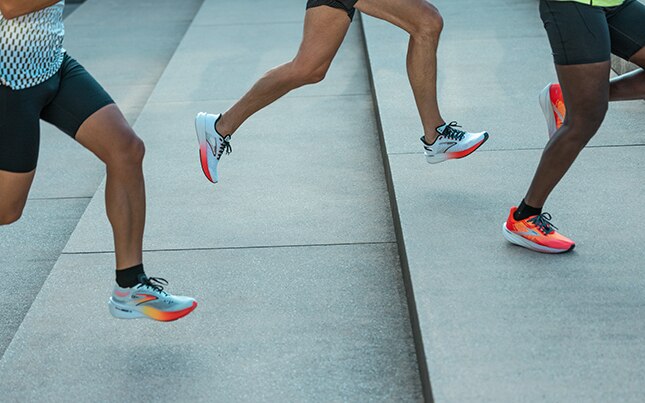How running up stairs can boost your running performance

Have you ever run up a flight or two of stairs and no matter how good of shape you're in, you're out of breath? Yeah, that's pretty normal. Stair workouts are killer, but they can help boost your overall running performance like almost nothing else.
Whether you're walking or running up stairs, you're building speed, strength, cardiovascular fitness, and agility. If you want to get in great running shape, you'll be sold on stairs by the end of this article and several of the recommended stair workouts below.
Why is running up stairs so great?
Running stairs translates very well to running on the road or trails and works your body exponentially more for faster, better results. What makes running stairs so hard? One simple word: gravity. Unlike running on the road, treadmill, or trails, you're constantly moving your body upward against gravity.
Running up stairs also forces you into a more forward-leaning position that mirrors a sprint more than it does a regular run or jog. Running in this position helps develop your major muscle groups like calves, glutes, hamstrings, and quads more intensely and creates more strength and endurance at faster paces when you return back to the pavement. Essentially, running stairs helps you become a more efficient runner at greater speeds. In addition, and often left out of this conversation, is the workout your body (mostly quads) gets on the way back down the stairs.
What's more, you're putting your body through plyometric training, involving more explosive movements and better reaction times to increase speed. You'll likely notice your foot speed and cadence improve, which is much less stress on your body.
Finally, because you are demanding so much more of your muscles, there is a greater demand for oxygen to the body and, in turn, your body learns a higher capacity for oxygen. A runner that can deliver more oxygen to the body is a runner that can run faster for longer.

Two effective stair running workouts
You can find stairs in many places. Whether a stadium, a park, a metropolitan area, or a stair stepper machine at your local gym, stairs are stairs, and you'll accomplish the end goal no matter what. I recommend running actual stairs over a stair stepper as a stair stepper involves more coordination and can actually be harder on your body at first, as you're being forced to maintain a consistent speed throughout rather than being able to slow when you get tired.
If you've never run stairs before, the best advice I can offer is to start out slow and do less than you think you can handle on your first couple workouts. Running stairs is a huge demand on the body, and it's important to ease into this new training. Finally, take your time on the way down between each rep, and view this as your recovery time before your next run up.
Here are two great stair running workouts you can try:
1. Climb the ladder
- Run up and down the stairs continuously for one minute. Rest for 30 seconds.
- Run up and down the stairs continuously for two minutes. Rest for one minute.
- Run up and down the stairs continuously for three minutes. Rest for one minute and 30 seconds.
- Run up and down the stairs continuously for four minutes. Rest for two minutes.
As you continue to run stairs, add additional reps (e.g., run for five minutes, rest for two minutes and 30 seconds). When running up, try to maintain a 70% effort.
2. Stair sprints
This workout is straightforward and will demand a lot from your cardiovascular system. It is preferably done after your normal run. Rather than pacing through this workout, you'll be sprinting every time you're climbing. This will help develop speed and strength on tired legs.
- Sprint up the flight of stairs.
- Take three minutes to jog or walk down, and remain at the bottom until the three minutes are up.
- Repeat five to seven more times depending on your level of fitness.
Our writer's advice is intended for informational or general educational purposes only. We always encourage you to speak with your physician or healthcare provider before making any adjustments to your running, nutrition, or fitness routines.

